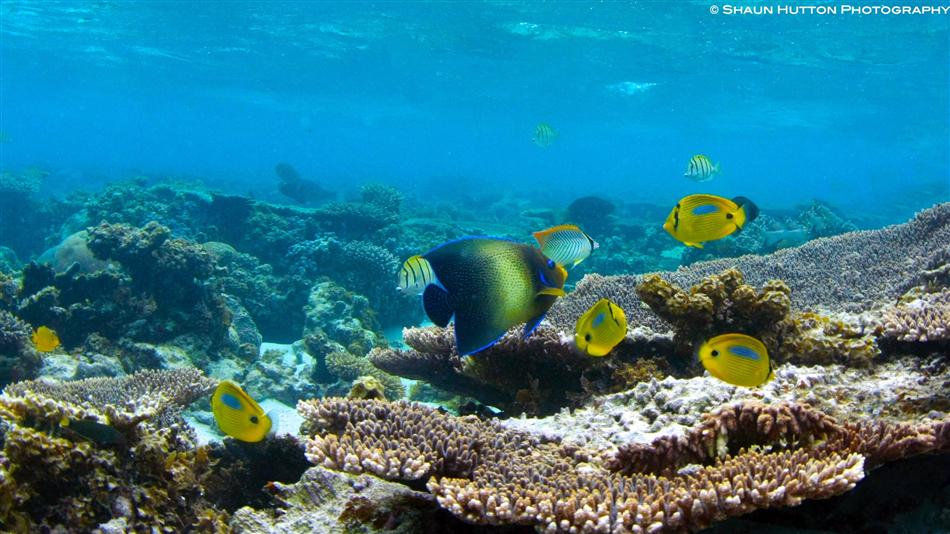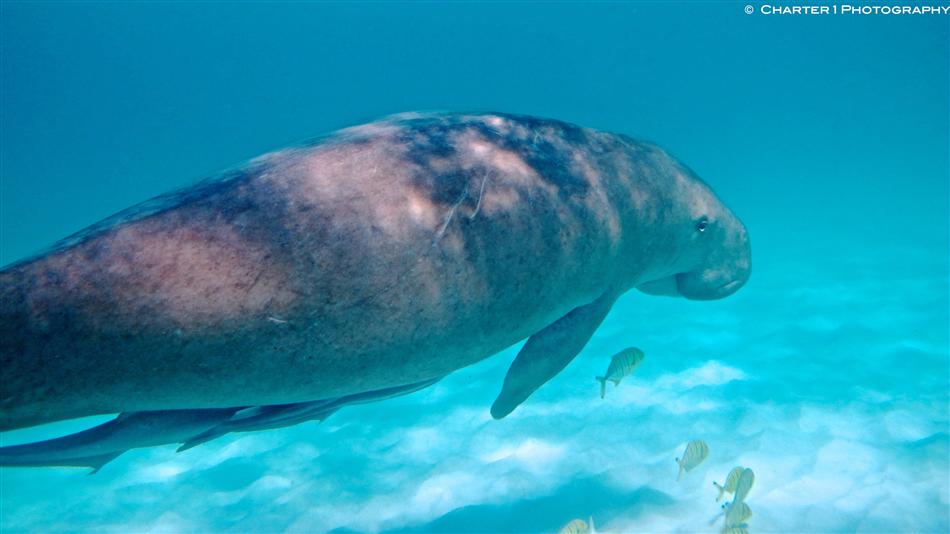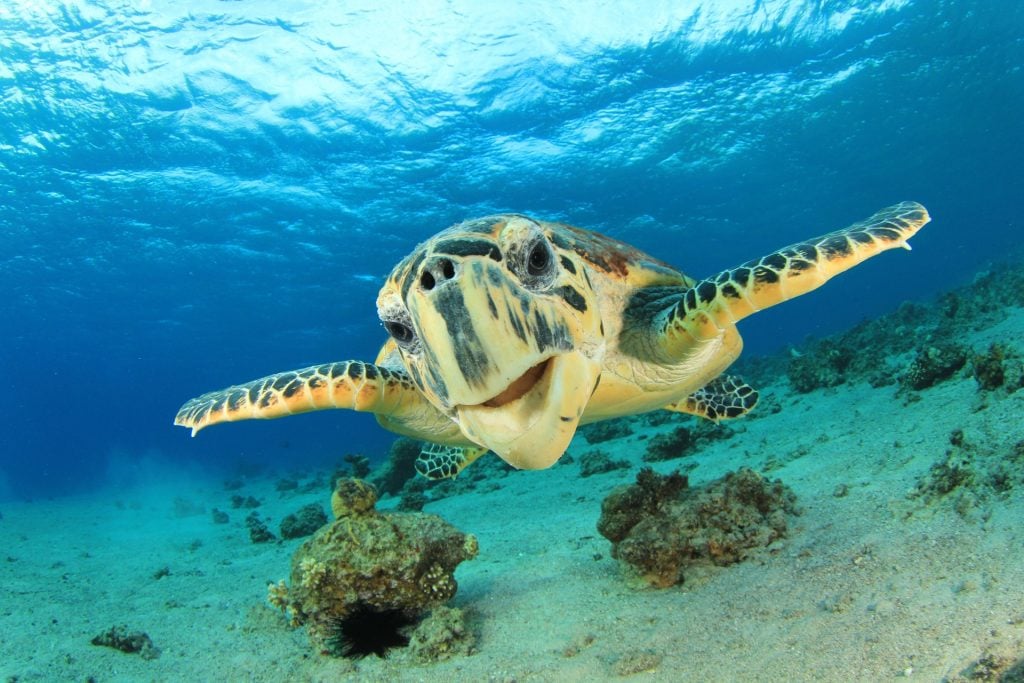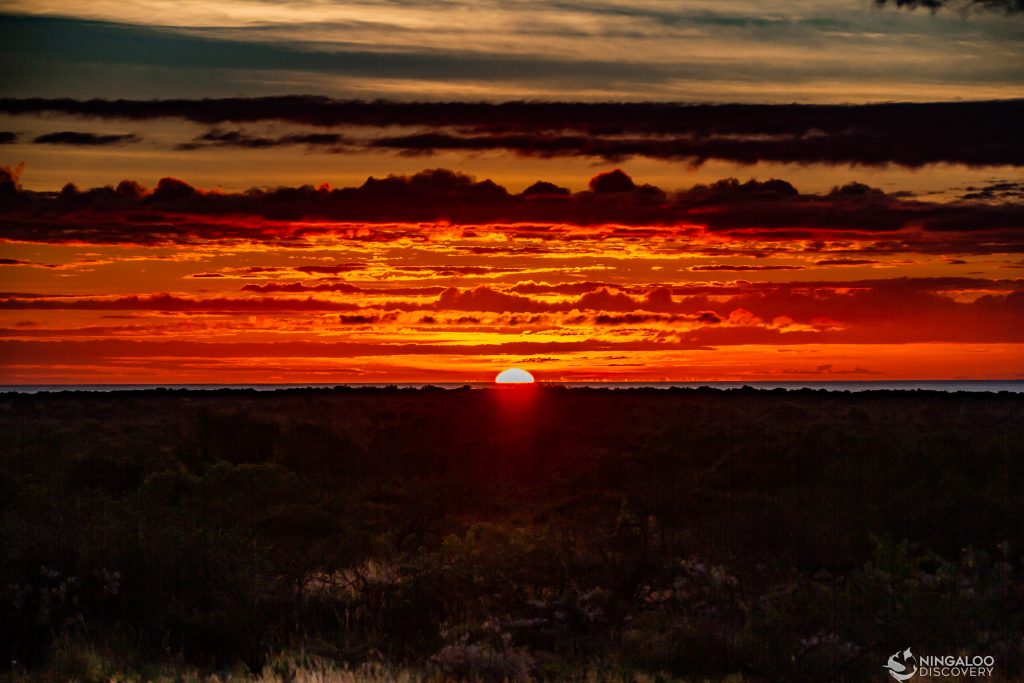About the Ningaloo Reef
The Ningaloo Marine Park is one of the longest fringing reefs in the world stretching 300 kilometres, and is one of two coral reefs in the world that have formed on the western side of a continent. What makes the Ningaloo Reef great is its close proximity from the coast in many areas being only 5-10 metres offshore. It contains an endless list of spectacular snorkel and dive sites for you to explore. Its abundance of extraordinary marine life is what brings us, and thousands of people to this special slice of paradise. Below you’ll find some information on some of the Wildlife you can expect to encounter.
About Coral Reef & Tropical Fish
 The Ningaloo Reef contains over 250 species of coral and over 500 species of fish with numerous studies continuing and developing within the area.
The Ningaloo Reef contains over 250 species of coral and over 500 species of fish with numerous studies continuing and developing within the area.
The coral in the Ningaloo Reef act as a vital source of coral larvae dispersing through the Abrolhos Islands, and even to Rottnest Island. Both soft and hard coral are native to the area, from cabbage corals, brain corals and lavender corals to delicate colourful branching corals, which form gardens in the shallow lagoons. Ningaloo Marine Park boasts an endless list of molluscs, crustaceans, algae and over 500 species of the most decorated and revered tropical fish in the world can be found including giant potato cod, sweetlip, spangled emperor and lionfish just to name a few.
About Dugongs
 Dugongs are closely related to the Manatee and are very similar in appearance and behavior, sometimes referred to as a ‘sea cow’ the dugongs spend their days grazing on sea grass found locally in the Ningaloo Reef.
Dugongs are closely related to the Manatee and are very similar in appearance and behavior, sometimes referred to as a ‘sea cow’ the dugongs spend their days grazing on sea grass found locally in the Ningaloo Reef.
These mammals can stay under water and hold their breath for up to six minutes before surfacing and have been known to breathe while standing on their own tail with their head out of the water. `
They are generally found alone or in pairs, can grow up to 3 metres, and weigh up to nearly 500kg, with a lifespan of up to 70 years! Dugongs are classified as extremely vulnerable extinction risk by the World Wildlife Fund so encountering a dugong is quite a special occasion as they are extremely shy creatures.
About Marine Turtles

The Ningaloo Reef is home to three species of turtle out of seven in the world, most commonly the Green Turtle, the Loggerhead Turtle and the Hawksbill Turtle. They can commonly be found cruising around the reef in search of food.
During the months of November, December and January they begin nesting along the shores and islands of the Ningaloo Reef. Turtles nest in the very same place that they were born which means some turtles may travel huge distances just to lay their eggs. For this reason there are many volunteers who monitor these beaches and protect eggs as they hatch come February/March time.
For more information on how to volunteer the team over at The Ningaloo Turtle Program work in conjunction with the Cape Conservation Group, the Department of Parks and Wildlife, Murdoch University, and WWF Australia and are always in search of keen environmentalist enthusiasts to help with the protection of these animals.
Indigineous History

The Ningaloo, or the ‘Nyinggulu’ in Baiyungu language has a long and culturally significant history.
HOW OLD?
Archaeological findings suggest indigenous groups have lived here for at least 32,000 years, most likely longer!
WHO?
The Baiyungu, Thalanyji and Jinigudira people were the main groups living here, and in 1997 the Gnulli native title claim was registered to recognize their ongoing connection to the Ningaloo Coast. The term Gnulli comes from the Thalanyji language and means ‘all of us’.
HOW?
From stories shared and archeological finds, it is understood these coastal dwellers used the ocean as a primary source of food, eating fish, turtles, turtle eggs and shell fish, such as rock oyster. Their diets were supplemented with land animals like kangaroo, plus roots and seeds. Shells such as Bailer shells were used to make tools and jewellery. A cone shell necklace was found near Mandu Mandu Gorge, in the Cape Range National Park and scientists believe it is around 32,00 years old, making it one of the oldest pieces of jewellery in the world! It is thought, camps were based in sand dunes next to tidal mudflats, where they harvested most of their food. The caves are also thought to have been used for camp, especially in cold weather.
COLONISATION?
In the 1870s Western settlers brought pastoralism to the Gasgoyne area. Able-bodied Jinigudira and Baiyangu were employed by the white station owners. While this impacted their traditional ways of life, it meant they were still able to live close to Country, despite being stripped of any rights to the land. However with the introduction of the Federal Pastoral Industry Award (1968) that required pastoralists pay their Aboriginal workers the same wages as their Caucasian counterparts, it resulted in most remaining indigenous families being forced to leave the area. Many were taken to Canarvon or Onslow.
TODAY?
In December 2019, the Gnulli native title claim was won, 22 years after it was lodged. This means the traditional custodians now have joint management with the Australian government of 71,354 square kilometers of land and sea in the Yamatji Region, in the shires of Ashburton, Carnarvon, Exmouth, Upper Gascoyne, Murchison and Shark Bay.
Consequentially, the Parks and Wildlife Service in Exmouth, are now engaged in jointly managing the lands and waters of the Ningaloo Coast. The Nyinggulu Coast Joint Management Body’s (JMB) membership consists of four traditional owner representatives and three senior staff from Department of Biodiversity and Cultural Affairs. The JMB is a collaborative decision-making body that draws on cultural knowledge and western land management expertise to protect and conserve the immense cultural significance and the World Heritage listed Outstanding Universal Values of the Ningaloo Coast for present and future generations.
We would like to respectfully acknowledge the Baiyungu, West Thalanyji and Yinikurtura People as the original custodians of the land and water around us. We pay our respects to the Elders, both past, present and emerging, for they hold the memories, the traditions, and the culture of this land we meet on.
